AMD Ryzen 5 3600 Review: Why Is This Amazon's Best Selling CPU?
by Dr. Ian Cutress on May 18, 2020 9:00 AM ESTGaming: Ashes Classic (DX12)
Seen as the holy child of DirectX12, Ashes of the Singularity (AoTS, or just Ashes) has been the first title to actively go explore as many of the DirectX12 features as it possibly can. Stardock, the developer behind the Nitrous engine which powers the game, has ensured that the real-time strategy title takes advantage of multiple cores and multiple graphics cards, in as many configurations as possible.
As a real-time strategy title, Ashes is all about responsiveness during both wide open shots but also concentrated battles. With DirectX12 at the helm, the ability to implement more draw calls per second allows the engine to work with substantial unit depth and effects that other RTS titles had to rely on combined draw calls to achieve, making some combined unit structures ultimately very rigid.
Stardock clearly understand the importance of an in-game benchmark, ensuring that such a tool was available and capable from day one, especially with all the additional DX12 features used and being able to characterize how they affected the title for the developer was important. The in-game benchmark performs a four minute fixed seed battle environment with a variety of shots, and outputs a vast amount of data to analyze.
For our benchmark, we run Ashes Classic: an older version of the game before the Escalation update. The reason for this is that this is easier to automate, without a splash screen, but still has a strong visual fidelity to test.
Ashes has dropdown options for MSAA, Light Quality, Object Quality, Shading Samples, Shadow Quality, Textures, and separate options for the terrain. There are several presents, from Very Low to Extreme: we run our benchmarks at the above settings, and take the frame-time output for our average and percentile numbers.
All of our benchmark results can also be found in our benchmark engine, Bench.
| AnandTech | IGP | Low | Medium | High |
| Average FPS | 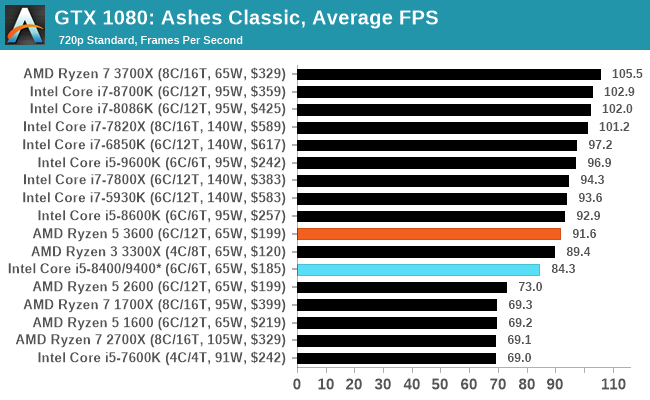 |
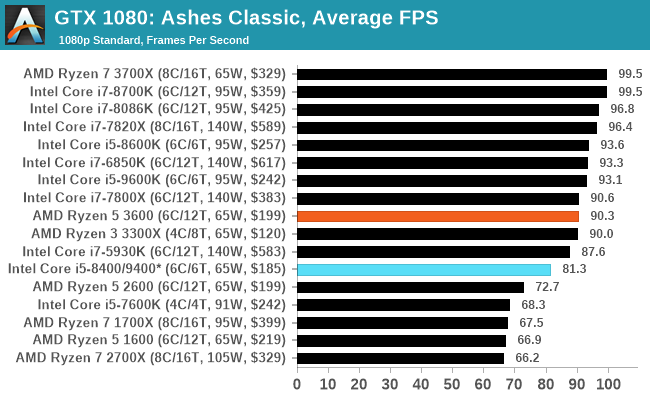 |
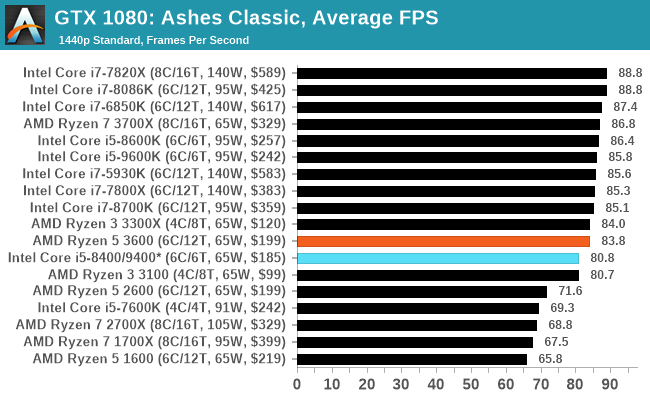 |
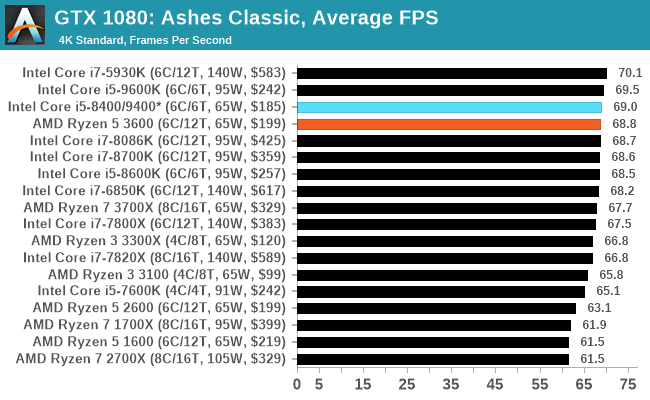 |
| 95th Percentile | 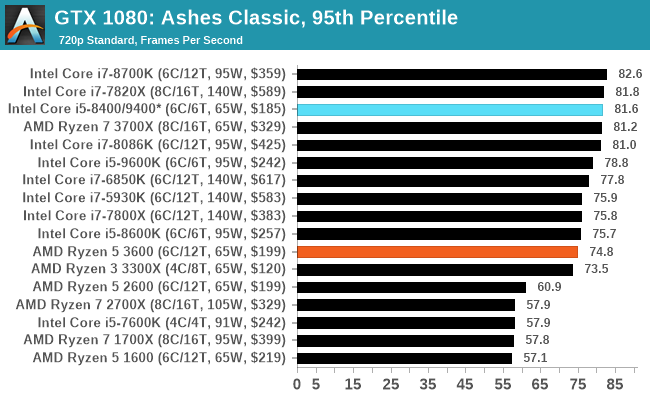 |
 |
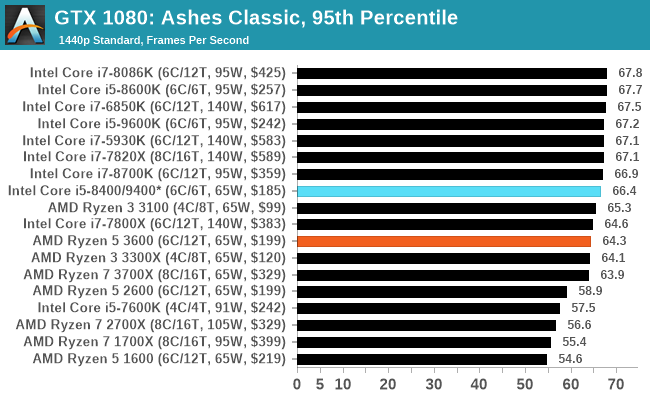 |
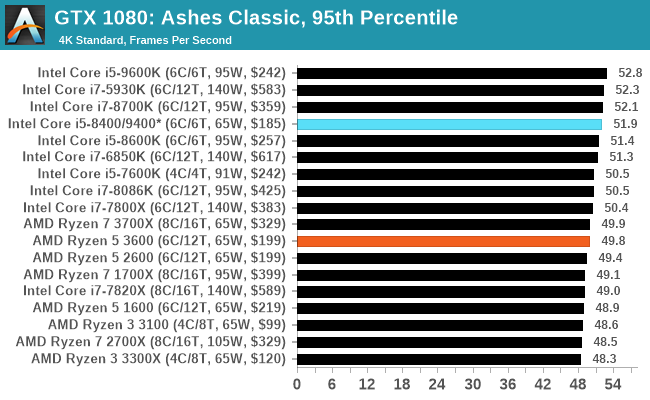 |


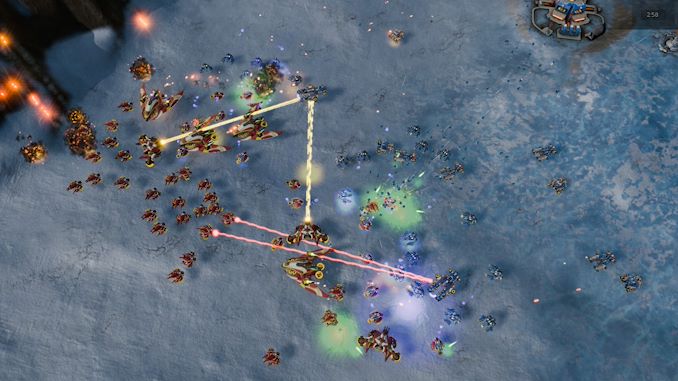









114 Comments
View All Comments
Meteor2 - Wednesday, May 20, 2020 - link
What a great site, thank you for posting it!tommythorn - Monday, May 18, 2020 - link
Typo: ">>Unfortuantely<< AMD has stated ...""once in a while, a truly great CPU" The 300 (but really, 450) MHz Celeron C300 II was such a processor. It was a kludge (desperate to compete with AMD, Intel rushed out a chip that was essentially a P-II but much cheaper). It ended up being an amazing value and with a few hacks even become the introduction to SMP for many.
catavalon21 - Monday, May 18, 2020 - link
I remember it well. Crazy to get a 50% overclock, but almost everyone's 300A would hit, and keep, 450.MDD1963 - Monday, May 18, 2020 - link
The famous Celeron 300A@464 MHz for $79 was quite popular, and, gamed as well as the $450 PII-450...Spunjji - Tuesday, May 19, 2020 - link
Funny how Intel's best price/performance moments tend to be knee-jerk responses to AMD :DToTTenTranz - Monday, May 18, 2020 - link
Does the USB-C Hub support AVX2?1_rick - Monday, May 18, 2020 - link
I'm not sure. Do the chickens have large talons?mikato - Sunday, May 24, 2020 - link
Really, is that the only USB hub on sale in Australia to rank that high?yeeeeman - Monday, May 18, 2020 - link
Cheap price and good performance. That is why.Flunk - Monday, May 18, 2020 - link
$200 is the prime price for people building a fairly powerful computer, but with a budget. 3600 pairs well with pretty much any video card for gaming and is pretty powerful for anything else. Intel competition at this price point is weak, at least until Apollo Lake. 3600 is a obvious recommendation.